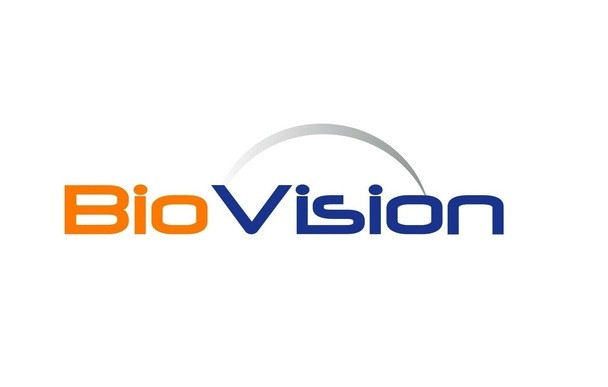Biovision
Human CellExp™ KLK-7 / Kallikrein-7, human recombinant
- SKU:
- 26-7510
- Availability:
- Usually Shipped in 5 Working Days
- Size:
- 10 μg
- Storage Temperature:
- -20°C
- Shipping Conditions:
- Gel Pack
- Shelf Life:
- 12 months
Description
Biomolecule/Target: KLK-7 / Kallikrein-7
Synonyms: KLK7, Kallikrein-7, PRSS6, SCCE, hK7, hSCCE
Alternates names: KLK7, Kallikrein-7, PRSS6, SCCE, hK7, hSCCE
Taglines: ≥95% pure, active, human cell expressed, human recombinant KLK-7 / Kallikrein-7 - a protein involved in metastasis in several cancers
Taglines: USA
Country of Animal Origin: USA
NCBI Gene ID #.: 5650
NCBI Gene Symbol: KLK7
Gene Source: Human
Accession #: P49862
Recombinant: Yes
Source: HEK293 cells
Purity by SDS-PAGE #: ≥95%
Assay: SDS-PAGE
Purity: N/A
Assay #2: N/A
Endotoxin Level: <1 EU/μg by LAL method
Activity (Specifications/test method): N/A
Biological activity: Measured by its ability to cleave the fluorogenic peptide substrate, Mca-RPKPVE-Nval-WRK (Dnp) NH2. The specific activity is >130 pmoles / min / μg.
Results: >130 pmoles / min / μg
Binding Capacity: N/A
Unit Definition: N/A
Molecular Weight: This protein is fused with polyhistidine tag at the C-terminus, and has a calculated MW of 26.1 kDa. The predicted N-terminus is Glu 23. DTT-reduced Protein migrates as 29-33 kDa in SDS-PAGE due to glycosylation.
Concentration: N/A
Appearance: Lyophilized
Physical form description: Lyophilized from 0.22 μm filtered solution in 50 mM Tris, 150 mM NaCl, pH 7.5. Normally Mannitol or Trehalose are added as protectants before lyophilization.
Reconstitution Instructions: Centrifuge the vial prior to opening. Reconstitute in PBS, pH 7.4. Do not vortex.
Background Information: Kallikrein-7 (KLK7) is also known as kallikrein-related peptidase 7, Stratum corneum chymotryptic enzyme, Serine protease 6, KLK7, and PRSS6, is a secreted protein which belongs to the peptidase S1 family and Kallikrein subfamily. KLK7 is secreted as an inactive zymogen in the stratum granulosum layer of the epidermis, requiring proteolytic cleavage of the short N-terminal pro-region to liberate activated enzyme. This may be performed by KLK5 or matriptase, which are in vitro activators of KLK7. Once active, KLK7 is able to cleave desmocollin and corneodesmosin. KLK7 activity is regulated by a number of endogenous protein inhibitors including LEKTI, SPINK6, elafin and alpha-2-Macroglobulin-like 1. Both Zn2+ and Cu2+ ions are also able to inhibit KLK7. Dysregulation of KLK7 has been linked to several skin disorders, and overexpression of KLK7 may provide a route for metastasis in several cancers.
Amino acid sequence: Glu 23 – Arg 253
Handling: Centrifuge the vial prior to opening.
Usage: For Research Use Only! Not to be used in humans



